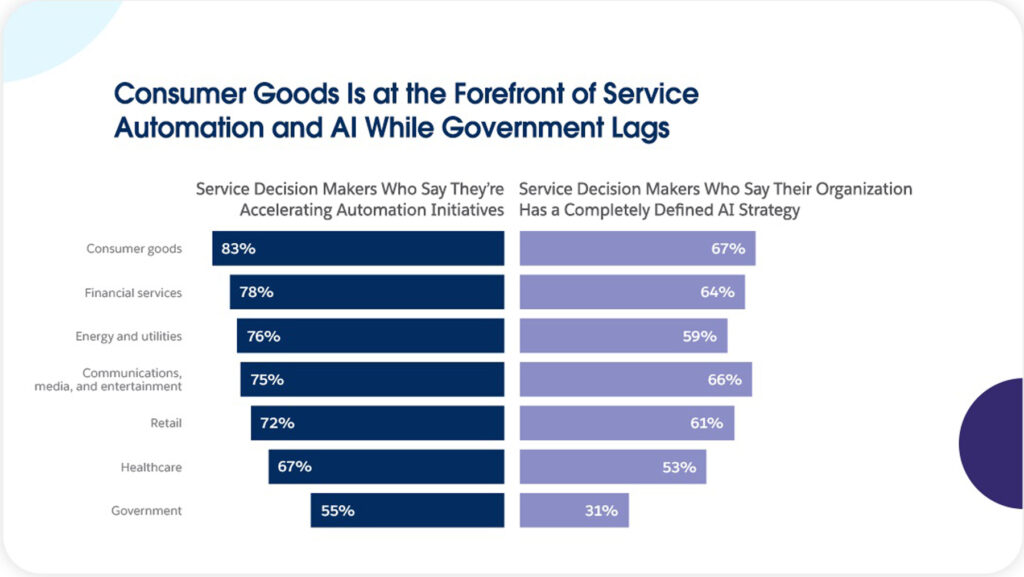23 December 2024, Mon |
8:01 AM

A global survey analysis of more than 25,000 consumers, business buyers and professionals finds that customer expectations are growing amid the transition to all-digital experiences. And employees – who are already stretched thin – are feeling more pressure to meet demand. In response, many business leaders are turning to AI and workflow automation.
Data from the Trends in Workflow Automation report calls out four key findings shaping the employee-to-customer relationship:

The pandemic and its aftereffects created urgency to adapt — nearly overnight — to a new set of customer needs and habits, accelerating what were once slow digitization transformations. With restrictions on physical interaction and a sudden upheaval to customers’ lifestyles and businesses, the call for digital change has been loud.
Rising customer demands have reached employees already contending with new work environments and personal stressors. For many, work days are longer than they used to be.
“Covid created massive pressure to digitize and automate workflows fast to handle the triple threat of overworked employees, changing customer expectations, and brand new processes” said John Kucera, SVP of Product Management, Automation.
“Organizations turned to low-code workflow automation to automate repetitive tasks, freeing up employees to make human connections with customers and adjust to the changing business needs. This has trained over 100,000 companies how to create intelligent automation fast, so you’ll see it play an even bigger role to come in the future.”
With employees across the business asked to do more with less, technical leadership has set its sights on workflow automation.

“If there’s one thing that 2020 has taught all of us it’s that the world is now all-digital, and there’s no going back. Customers are expecting faster if not instant responses to more complicated cases, across more channels than ever before — adding more headcount can’t be the only answer” said Clara Shih, CEO of Service Cloud.
“Within this environment, Service leaders must look to AI-powered bots, self-service, and modern work orchestration to intelligently route work to the right person with the right skills in order to reduce the burden on their support teams while living up to customers’ expectations.”
AI has become a powerful aid in customer service, working behind the scenes to raise insights and recommendations, populate data, and trigger processes. But there’s room for growth.

“Customers are expecting faster if not instant responses to more complicated cases, across more channels than ever before — adding more headcount can’t be the only answer,” said Clara Shih, CEO, Service Cloud.
Customer service teams are looking to automation for relief from escalating workloads. Time-consuming manual processes, like collecting background information and conducting after case work like follow-up actions, can frustrate both the customer and the employee.
According to sales leaders, AI helps reps better address customer needs. AI has been rapidly growing in the sales realm, helping to improve forecast accuracy and customer insights, but leaders say AI’s most significant impact ties directly back to the customer relationship. Put simply, AI helps sales reps spend more time with each customer and better understand their unique needs.

“We saw a new type of buyer emerge in 2020 who is looking for a trusted partner and similar business values before a transaction can even take place. Every interaction needs to be impactful when customers expect fast outcomes and everyone is short on time,” said Taksina Eammano, SVP of Product Management, Sales Cloud. “As sales teams are tasked with getting businesses back to growth, sellers are turning to AI to understand their customer’s needs faster, and in turn, creating stronger partnerships that last beyond a one-time transaction.”